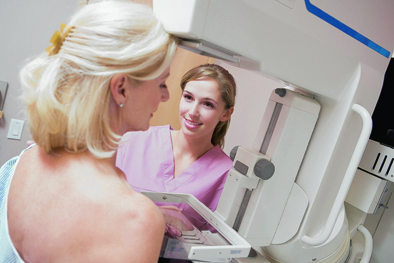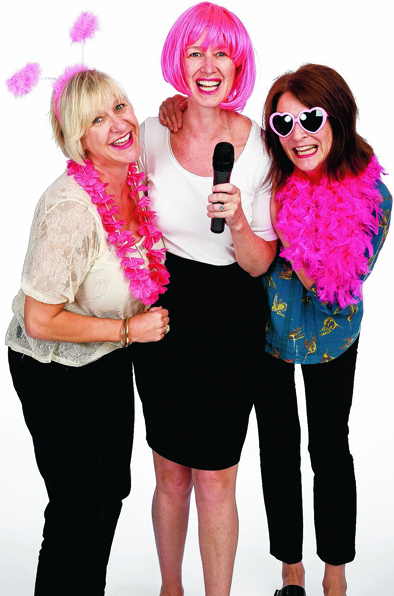Survival rates for breast cancer are higher than ever, but that doesn’t mean the battle is over. As October is Breast Cancer Awareness Month, we look at the long-term struggles of life after the disease
Living after breast cancer is a much more common consideration than dying from the disease these days, thanks to massively improved survival rates.
However, this isn’t nearly as straightforward as it sounds.
Around 50,000 women and 400 men are diagnosed with breast cancer each year in the UK, and it’s estimated that one woman in eight will get the disease in her lifetime. An amazing 85% now survive beyond five years after diagnosis (around 12,000 women and 80 men die from breast cancer each year), thanks to factors including advances in research and treatments, screening and earlier diagnoses.
But surviving isn’t the end of the battle, as often post-cancer life is plagued by hidden side effects, and getting ‘back to normal’ is far more complex than people might expect.
This is what Breast Cancer Care’s new campaign aims to highlight during this year’s Breast Cancer Awareness Month.
This doesn’t just include the well-known effects of cancer treatment, like hair-loss after chemotherapy, or physical changes after a mastectomy, but other problems, such as losing fingernails, the loss of fertility, early menopause, fatigue and weight gain.
Rachel Rawson, clinical nurse specialist at Breast Cancer Care, says: “There are so many people living a long life now after breast cancer, and we’re much more aware that the side effects the treatment can give are long-lasting, and people really do struggle with them.
“When you’ve been through something so traumatic, often everyone expects you to get back to normal after the treatment, but many people don’t feel like the person they were before it all started.
“I think that now, people feel they’re more able to come forward and say it’s not all right, and they want to do something about it.
“They can think more about life than death.”
There are also deep psychological challenges. Rawson explains that the charity frequently hears from women who are struggling with side effects linked to the emotional consequences of a diagnosis, like the loss of femininity and trying to regain body confidence after surgery, which can result in not feeling sexually attractive with a partner.
“People think it seems trivial after what they’ve just been through, and wonder how they can talk about their sex life with their doctor after he’s just treated them for a life-threatening disease,” she says.
“There’s also the strain of returning to work and the potential financial worries, combined with the daily fear of breast cancer returning.
“Often it’s these unexpected effects of breast cancer that hit people the hardest, especially when they keep them hidden from their friends or family, who may think and want them to be ‘recovered’ and ‘back to normal’.”
A huge problem for younger women can be the effect of chemotherapy on their fertility. The treatment can stop the ovaries from working, either permanently or temporarily, depending on the drugs used and the dosage, and Rawson explains that younger women should be referred to a fertility centre to decide whether there’s a possibility of freezing embryos or preserving their fertility in some way.
“Many women tell us that this is just not happening,” she says. “Women are not getting support or information at this crucial time, and they’re not getting access to services that could potentially save their fertility for the future.
“So they come out the other side of treatment, might think they’d like to have a baby and at times, it won’t be possible, because for some women – not all – their fertility is lost forever.”
Breast Cancer Care is working towards ensuring every woman who needs it has access to links for fertility referrals, so they can at the very least have a discussion with relevant professionals about whether they want to try to preserve their fertility or not.
They also hope the latest campaign will encourage anybody struggling to use Breast Cancer Care’s specialist nurses, local services and emotional support network to help deal with the problems.
Rawson adds: “We understand the devastating impact a diagnosis has, and through our new campaign, we want to raise awareness, so that more women know that Breast Cancer Care is here to support anyone waking up to the harsh reality of breast cancer every day.”
SPOT THE SIGNS
Treatments may have come a long way, but early diagnosis is still absolutely crucial for the best chances of surviving breast cancer, so getting any changes checked out immediately is vital.
“Most of the time, it will be fine, but at least you’ll know,” Rawson points out, stressing that making sure women are aware of what’s normal for their own breasts, and checking them regularly, is one of the driving forces behind Breast Cancer Awareness Month.
Coppafeel! is also hoping to help the message hit home this year, with their #whatnormalfeelslike advertising campaign featuring women’s bare breasts. The full frontal photographs of breasts painted with words that describe how they feel to each woman, like ‘squidgy’, ‘spongy’ and ‘bobbly’, are being displayed on large digital screens in London, Liverpool and Glasgow, as well as in the press throughout October.
The idea is that the photographs will help normalise and desexualise breasts, and help women reclaim the vocabulary surrounding them, so they can be confident in describing what normal breasts feel like – and therefore what they feel like when there may be a problem.
Kris Hallenga, who founded CoppaFeel! after being diagnosed with stage 4 breast cancer at the age of 23, says: “We want to make it normal for girls to talk about their boobs. Society and the media think of breasts in a sexual way, but by creating this campaign, we want to give boobs back to women and encourage them to think and talk about them in terms beyond size.
“The more normal it is to talk about boobs, the more likely women are to check themselves regularly and spot any changes early.”
Visit
coppafeel.org/what-we-do/whatnormalfeelslike/
JOIN THE PINK PARADE
Breast Cancer Care’s Pink Fridays
Pick a Friday and raise money by doing things like getting colleagues to wear pink to work and make a donation, or organise a pink night in at home, donating what you’d normally spend on a night out to Breast Cancer Care instead. “Get everybody to dress up pink and make it a really fun event, to raise money and promote breast awareness and early reporting of breast changes,” suggests Rawson.
Visit www.breastcancercare.org.uk
Breast Cancer Campaign’s Wear it Pink
On Friday, October 24, wear pink clothes and make donations to the charity. Give your fundraising efforts a boost by organising pink-themed events and games at work, school and at home, such as pink bake sales.
Visit www.breastcancer
campaign.org

